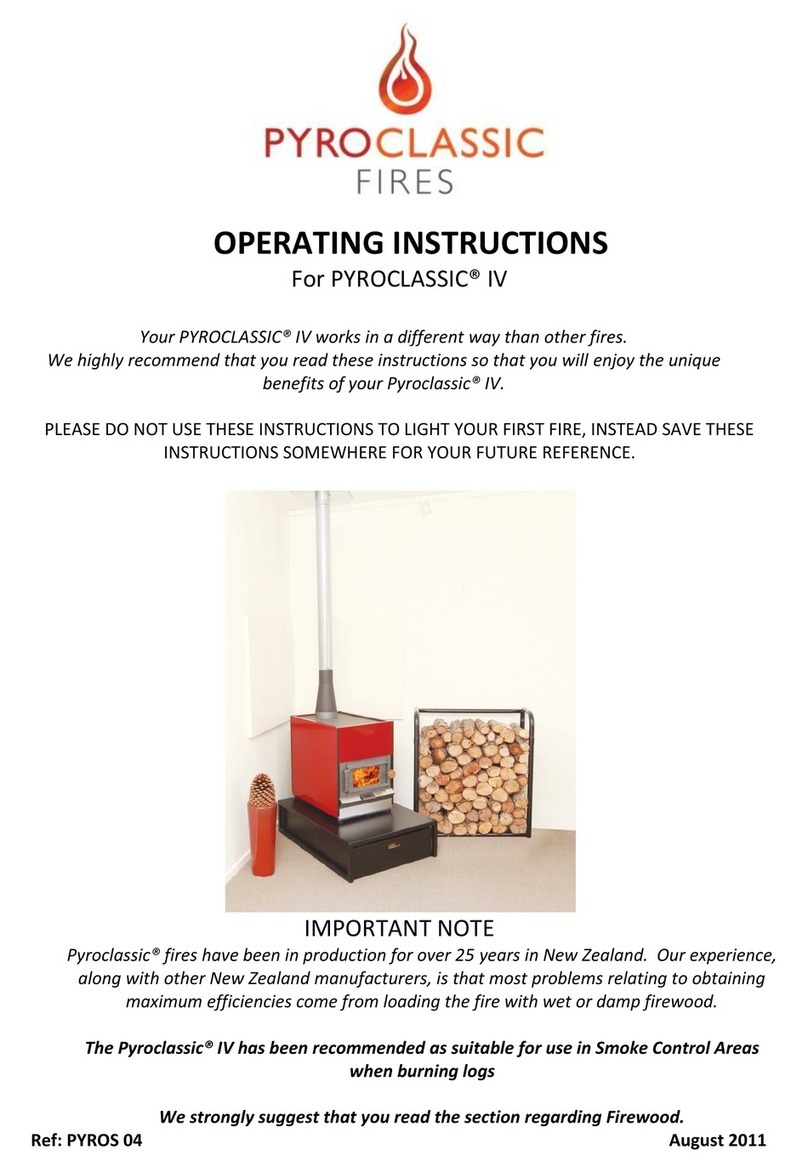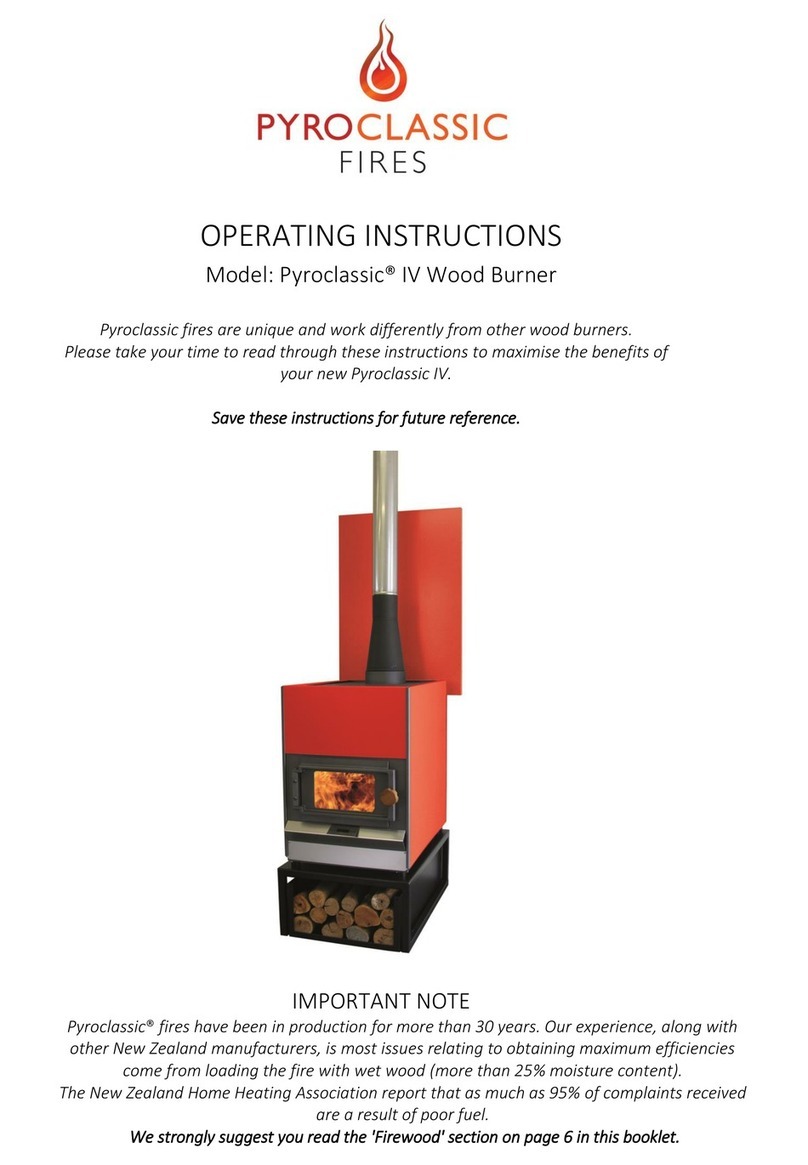
Pyroclassic Fires Operating Instructions | Updated May 2019 | V4 | 7
DOOR/DOORKNOB
DO NOT run the fire with the door open. It will never reach the correct operating temperature, and this can be very
dangerous.
The door seals with little pressure so please do not overtighten or it may be hard to open when the unit is hot. The door
knob is a great indicator of what is going on inside your fire so if you find the door knob is too hot when you go to refuel,
you are probably trying to refuel to early. Overtightening the door knob can also cause damage to the door gasket and
fixing screws.
If your door knob is starting to show signs of charring or is getting loose, you are probably burning your fire too close to
the door, overtightening the door knob and/or refueling the fire too early. Try closing the turboslide a little sooner and let
the fire burn down more before reloading again.
Do not lean on the door or use it to help you stand when it is open as this can cause the door to move. If your door does
become misaligned, loosen the bottom bolt of the hinge bar, slightly and lift the door back into the correct position then
retighten the bolt.
AIR INLETS
Do not block any fixed air inlets as this will affect the fire’s performance and may cause permanent damage.
GREASING THE DOORKNOB SPINDLE
A small amount of graphite grease should be applied to the spindle of the doorknob, usually twice a year is sufficient.
Ashes from the fire have a gritty texture and over time this can cause wear on the doorknob spindle. Using a matchstick
or cocktail stick, lubricate the groove in the first thread. Use the door grease sparingly as too much will melt and dribble,
causing an unsightly stain. Remove any excess before relighting the unit.
CLEANING THE DOOR GLASS
The air wash over the door should keep the glass clean. A dirty glass is a sign of a fire that is not getting hot enough,
normally caused by trying to burn unseasoned or unsuitable wood. If your door glass needs cleaning, scrunch up two
pieces of damp newspaper, dip one in cold fire ashes and rub over the inside of the glass. Use the other to rub over the
glass to remove the dirt from the ash. Get into the habit of cleaning it regularly as this will maintain the glass and prevent
ashes from fusing. Clean the glass when it is cooler, such as in the morning before rekindling the fire. If your fire is
operating correctly, your door glass should have a light, white cloudy appearance.
Please note: This appliance should not be operated with a cracked glass.
FLUE CLEANING/CHIMNEY SWEEPS
The Pyroclassic flue will only clog up if you burn wet wood, fuel with an inadequate air supply, or if the fire chamber does
not reach normal operating temperature. We recommend your flue be swept at least once a year, or more frequently if
necessary (i.e. if you notice smoke coming out of the open door). Pyroclassic fires are different from other wood fires and
should be swept from the top down into a tray or bag at the bottom of the flue; if excess buildup has occurred then it
may be necessary to remove the top plate from the fire to empty out the top chamber. Do not allow the chimney sweep
to dismantle the flue or take the cooktop off unless they are sure they know what they are doing.
Please ensure whoever is sweeping your flue has watched our ‘How to clean the flue of a Pyroclassic fire’ video online at
http://www.pyroclassic.co.nz/resources/videos/
Please note: Before relighting the fire after a prolonged shutdown, check the flue for any blockages, such as birds nesting
in the chimney.
COOKING ON THE PYROCLASSIC
The top plate on the Pyroclassic can be used as a cooking surface directly as a hob. Anything you would normally cook on
your conventional appliance can be cooked on the Pyroclassic and with the right amount of trial and experimentation we
hope you will enjoy this and further save on resources.
Note; There is a risk to the cosmetic finish of the product if used as a cooktop due to the chance or spills etc. this is to be
expected and most often can be cleaned up by having a hot bright fire and burning off any deposits from the top plate.





























